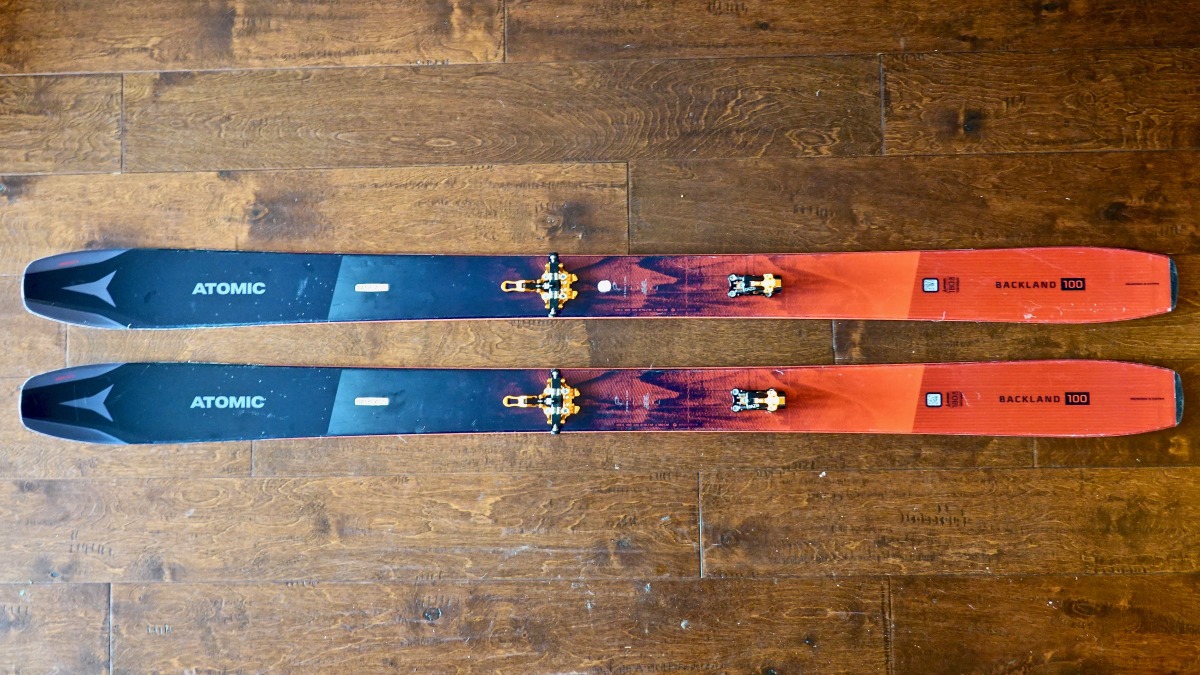
The 20/21 Atomic Backland 100.
Define the perfect spring ski. I have heard of folks searching for one, and believed myself that there was such a thing. Certainly, there is a good corn snow specific ski, for the individual at least. For me it is ~10 mm narrower than a winter rig and boasts a healthy amount of camber. But spring and corn are not synonymous. Spring stability and snow coverage open up a myriad of terrain options and snow types, not all good, and versatility reigns supreme.
Last spring I skied more than I ever have and ended up with all of two corn days. Heaps more of the soft and dry stuff, also many in wind effect and breakable crust. The Black Crows Navis Freebird has been my spring go-to for a few seasons for all terrain skiing. In the interest of experimentation and providing some reviews, I thought I’d look around a bit this spring as see if anything else competes.
First up on this tour-de-printemps: the Atomic Backland 100, in 180 cm length. This is a 20/21 item that was soft launched early this month. In the Backland 100, I was anticipating a light and versatile ski for big days. The 100mm waist promised sufficient float in springtime powder or punchy and breakable varieties of alpine snow. The weight, 1400 grams listed, is plenty light for distant missions or monster vert days. Or, distant missions with monster vert, — a spring season tradition. Top it off with a sidewall and Atomic downhill heritage. I was eager to test.
Construction and Shaping
The Backland 100 uses Atomic’s Ultra Light Core; a blend of Poplar and Caruba woods that is reinforced with a carbon stringer. The 100 utilizes a semi-cap side wall that runs between the early rise contact points. In WildSnow tradition I unwrapped them and plopped one on the scale and to my surprise, the digits read 1-3-1-8. A heck of a light sidewall ski at this length and width. I put its mate on and interestingly found it to weigh 1376g. Closer to what the catalog had promised. I reached out to Atomic, and they said us lowly media-types get the hastily paired skis. Retail skis are weighed and flex tested to be matched into appropriate pairs.
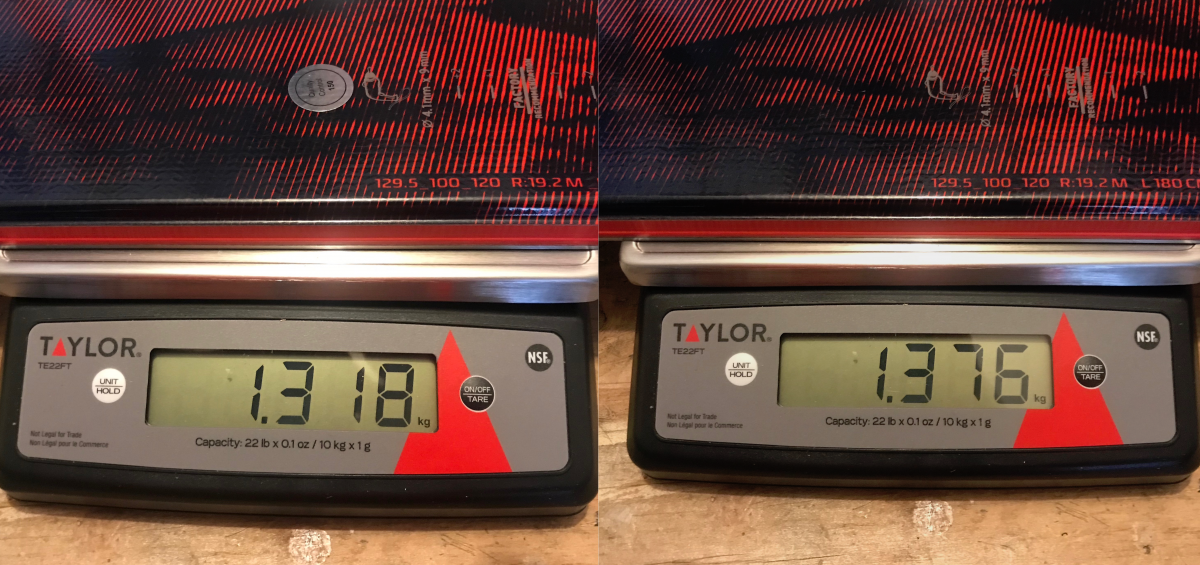
58 gram discrepancy between skis. On the high side, but variations in wood always lead to some difference.
This sparked my curiosity and I cruised over to the local shop to investigate weight discrepancies. I found variations from 2g-30g, with no particular correlation to brand. Two separate pairs of identical model skis had 3g and then 28g differences. I’ll dive into the on-snow performance below, but the 58 gram difference is not perceptible to me.
The Backland 100 shaping is an interesting departure from current trends. Modern skis tend to have either a tight turn radius or generous taper from tip to tail. The 180cm Backland 100 has 129.5/100/120mm width dimensions, for a taper of only 9.5mm and 19.2m turn radius. I waxed on about the effects of tip-to-tail taper (10-15mm seems industry standard) in December’s Trends in Touring Ski Shapes article. A pinner tail allows for a soft and breakable snow bruising wide tip without a tight and hooky turn radius. Versatility gained, it would seem.
Atomic also inserts the spooned Horizon Tech tip shaping they have been trotting out recently. With respect to the fluid dynamics engineers, I’m sure it does something, but it is not noticeable in the field unless you’re throwing Chris Benchetler level nose butters. If there’s any application in my realm, it could prevent hooking up accidentally crossed tips.
On Snow Performance
As the days and skinning approaches of spring get longer, reduced ski weight is much appreciated. The svelte Backland 100s absolutely fly around a well executed kickturn, helpful when vertical skinners in softer early spring snow contain never ending switchbacks. Skis tend to end up on the back more often in spring, and low pack weight is nice when heavy skis can give a pendulum effect moving through snowy granite.
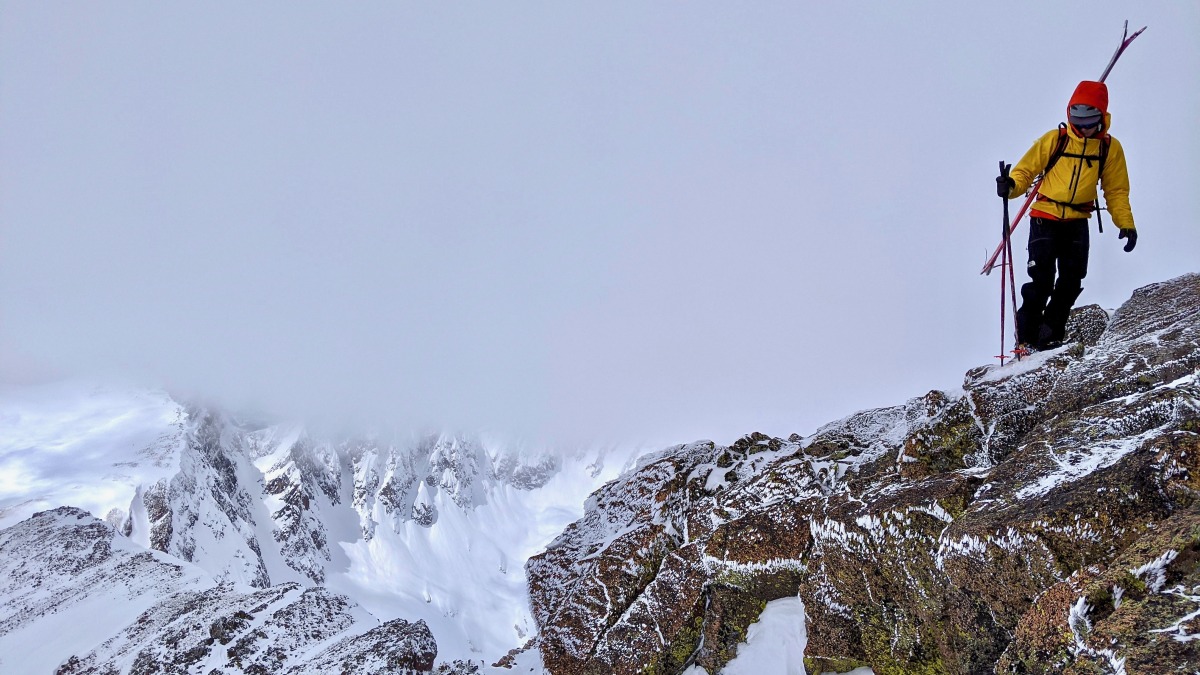
A windy ridge walk went on longer than expected as we turned down many ski options due to wind slab formation. The light weight was welcomed while scrambling in the wind.
I’ve been able to ski the 100s in a variety of conditions from traditional spring melt freeze to deep powder. My main takeaway? It’s one of the better performing light constructions that I’ve skied. A full sidewall helps. Skiing these with a well matched light boot (the La Sportiva Skorpius CR mostly — read our review here) also helps. Between the low weight, minimal taper, and moderate side cut, the Backland 100 is an excellent ski for distant steep pitches. Jump turns are effortless with these feathery boards. Lack of protruding tip or tail keep the hooky chatter to a minimum when the edges are the only thing biting the precipitous snow below. The midfoot feels quite stiff, with the appropriate give in the tip and tail.
Reduced taper does have its drawbacks. The 100s are a bit more work once the angle mellows out. Slashy turns of varying sizes aren’t really in the repertoire, consistent milking of your earned turns are more the MO. Moderate angle powder skiing required a good bit of focus and effort on getting the tails around. Normally I would just pressure the tip more, but the width up front isn’t quite enough to lean on in comparison to the tail, tips would bury.
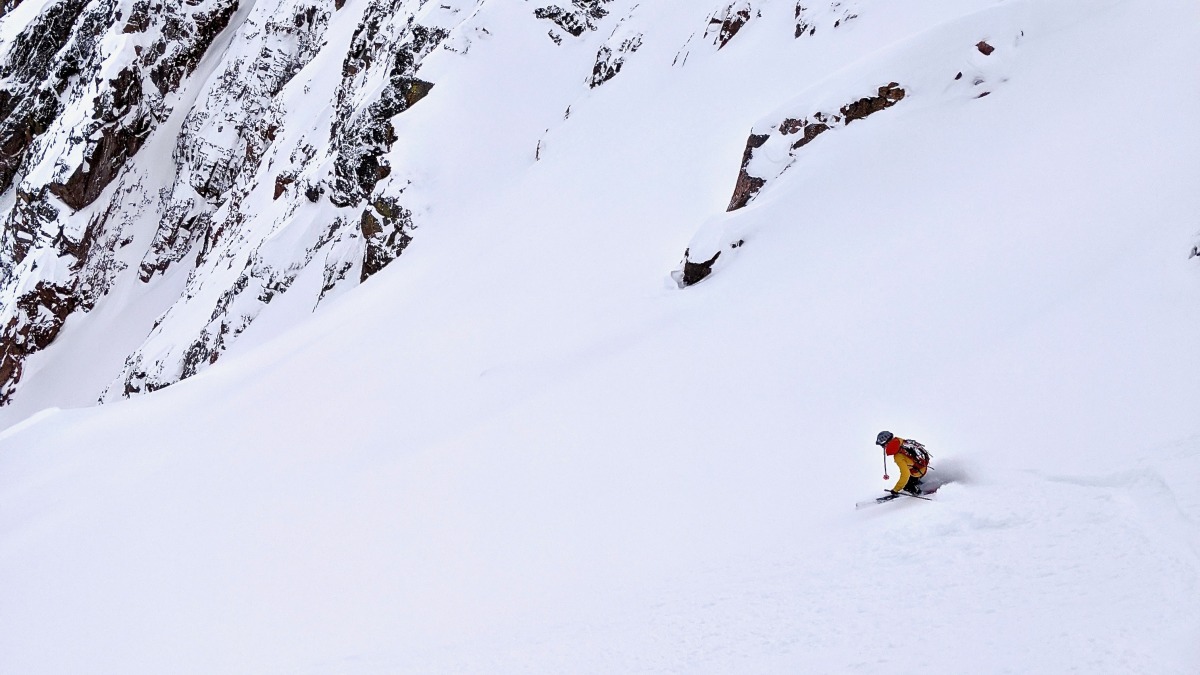
Then found a protected one. Happy to have the BL 100’s on board while hunting distant powder filled couloirs.
Steep powder skiing on the 100s is also a slight departure from what I’ve become used to in other modern skis, but felt more fluid than in mellow terrain. Falling through feathers is always easy isn’t it? Though the 100s are old-school in their lack of taper, I found new-school ski technique (Low and centered, heels actively weighted but shins still bending boot) to be the preferred method of driving them in free fall. In short, the Backland 100s really love to be across the fall line and have their tails unweighted when you do cross it.
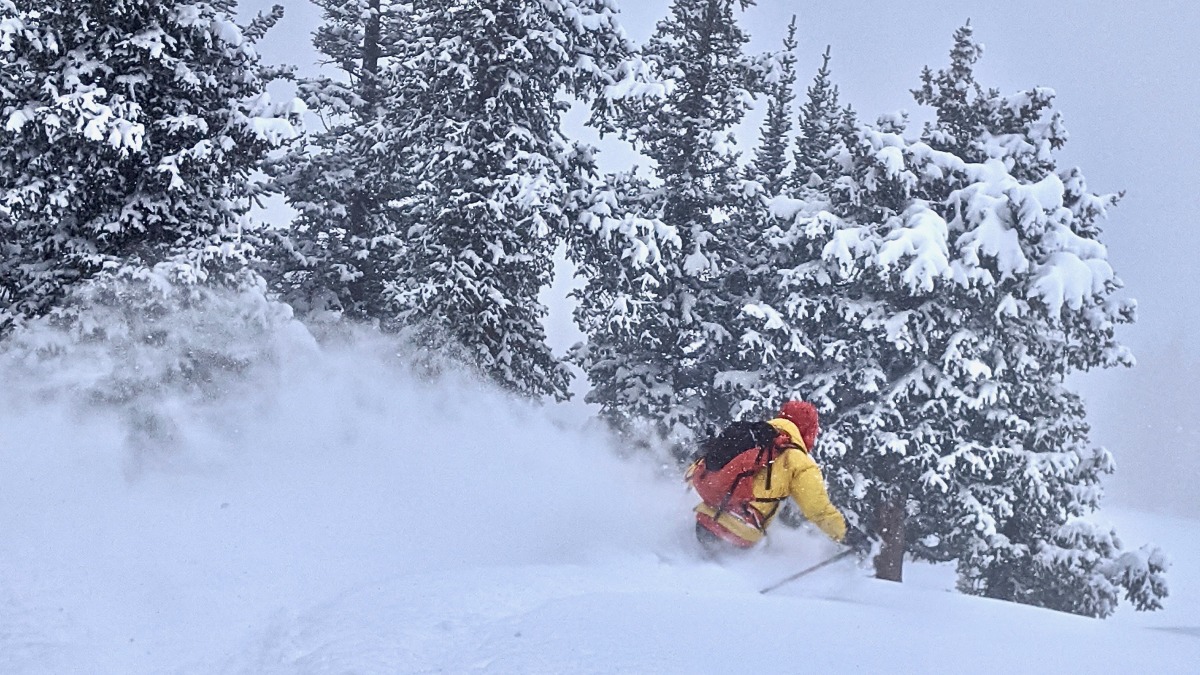
Rolling into the steep and deep on the Backland 100s. Hard to complain about getting the tail around in these conditions.
I read all of the gear comments here on WildSnow, and often see stalwarts lament the tight turn radii, rocker, and other modern shapeliness of the majority of new skis. Those looking for a more traditionally shaped light ski will probably dig the Backland 100, though will most likely prefer to mount it back from center. I’m considering making a rearward move myself, something I never do, and will comment below if so. **Update, moved the mount back 1.5cm, noticeable improvement. Skied them in moderate angle, wind effected powder, which would have been a challenge before. Still a very supportive and noticeable tail, but was able to pressure the tip a lot more to unweight tails.**
Is the Atomic Backland 100 the perfect spring ski? Testing them has supported my theory that there is no such thing. It certainly is not the poor snow crusher that the Navis Free is. It is an excellent option for my favorite springtime activity though — skiing remote and steep lines.
SPECS
Lengths: 164, 172, 180, 188 cm
Turn Radius: 14.6, 17, 19.2, 21.6
Dimensions: 129.5/100/120mm in 180 cm
Rocker Profile: 20/70/10
Core: Poplar, Caruba, Carbon Fiber stringer
On March 22nd 2021, Gary Smith tragically died in an avalanche outside of Beaver Creek Resort in Colorado. Since 2018, Gary has been a frequent and insightful contributor to WildSnow. From Christmas Eve spent at the Wildsnow Field HQ cabin, to testing gear and sharing his love for steep skiing around the world, he was a pillar of the ski touring community and will be greatly missed.
